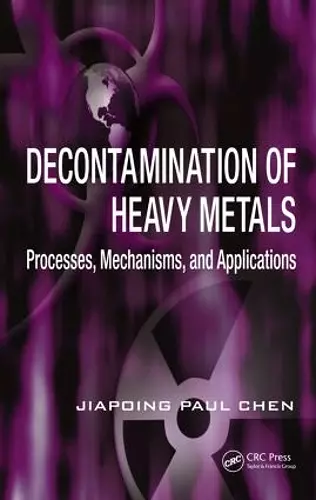Decontamination of Heavy Metals
Processes, Mechanisms, and Applications
Format:Hardback
Publisher:Taylor & Francis Inc
Published:18th Dec '12
Currently unavailable, and unfortunately no date known when it will be back

Heavy metals, such as lead, chromium, cadmium, zinc, copper, and nickel, are important constituents of most living organisms, as well as many nonliving substances. Some heavy metals are essential for growth of biological and microbiological lives, yet their presence in excessive quantities is harmful to humans and interferes with many environmental processes. Heavy metals are also nonbiodegradable, making them more difficult to remediate. Decontamination of Heavy Metals: Processes, Mechanisms, and Applications tackles the subject of heavy metals in the environment, with special emphasis on their treatment, removal, recovery, disposal, management, and modeling.
Concepts, Cutting-Edge Technologies, and Applications
The book provides in-depth coverage of the major hazardous heavy metals that are found in water, land, and facilities and that have significant effects on public health and the environment. After an overview of heavy metal contamination, the text reviews the concepts and technologies of pollution prevention. It then examines technologies for metal decontamination, ranging from precipitation—which is the most commonly used—to cutting-edge technologies such as precipitation-crystallization, ion exchange, membrane filtration, and electrolysis. Mathematical models for metal removal and recovery are also included.
Develop a Feasible Total Heavy Metal Control Program
Complementing other books in the Advances in Industrial and Hazardous Wastes Treatment series, this volume presents important research related to the remediation of heavy metals. Extensive references are included for readers who want to trace, duplicate, or improve on a specific industrial hazardous waste treatment practice. A comprehensive handbook for environmental professionals, researchers, and students, it provides technical information to help readers develop a feasible total metal control program that can benefit both industry and local municipalities.
"This book covers fundamental theories of metal removal, including calculation of metal ion uptake in environmental systems. Professionals and students working in environmental engineering may find this book a very useful reference. ... This book is organized with a deliberately logical flow, defining concepts at the beginning, and gradually building up theories and applications."
—Dr. Gang Chen, Florida State University, USA
This book covers fundamental theories of metal removal, including calculation of metal ion uptake in environmental systems. Professionals and students working in environmental engineering may find this book a very useful reference. ... This book is organized with a deliberately logical flow, defining concepts at the beginning, and gradually building up theories and applications.
—Dr. Gang Chen, Florida State University, USA
ISBN: 9781439816677
Dimensions: unknown
Weight: 771g
454 pages